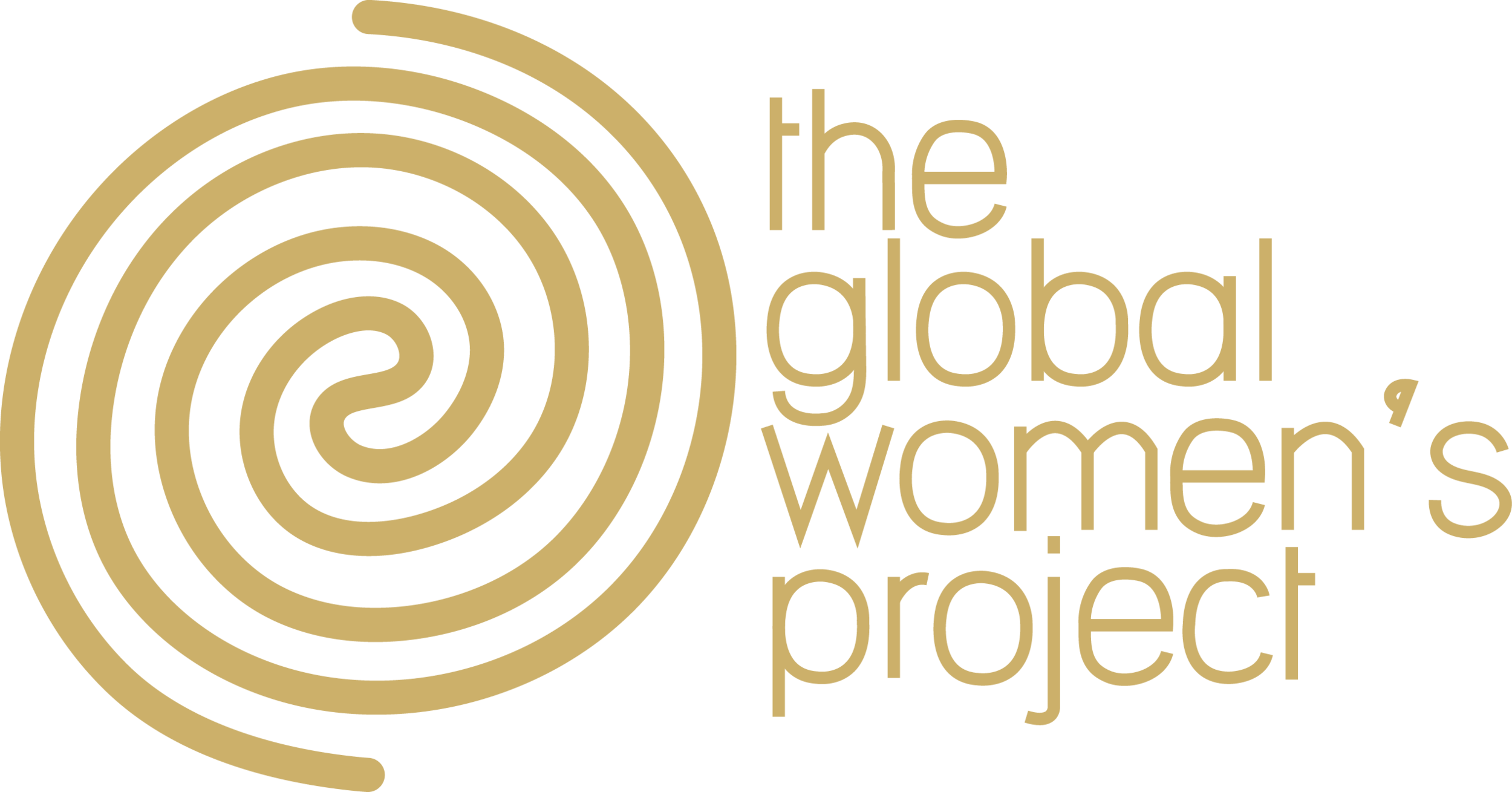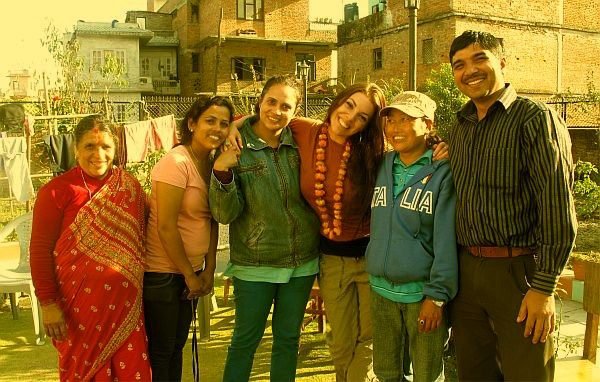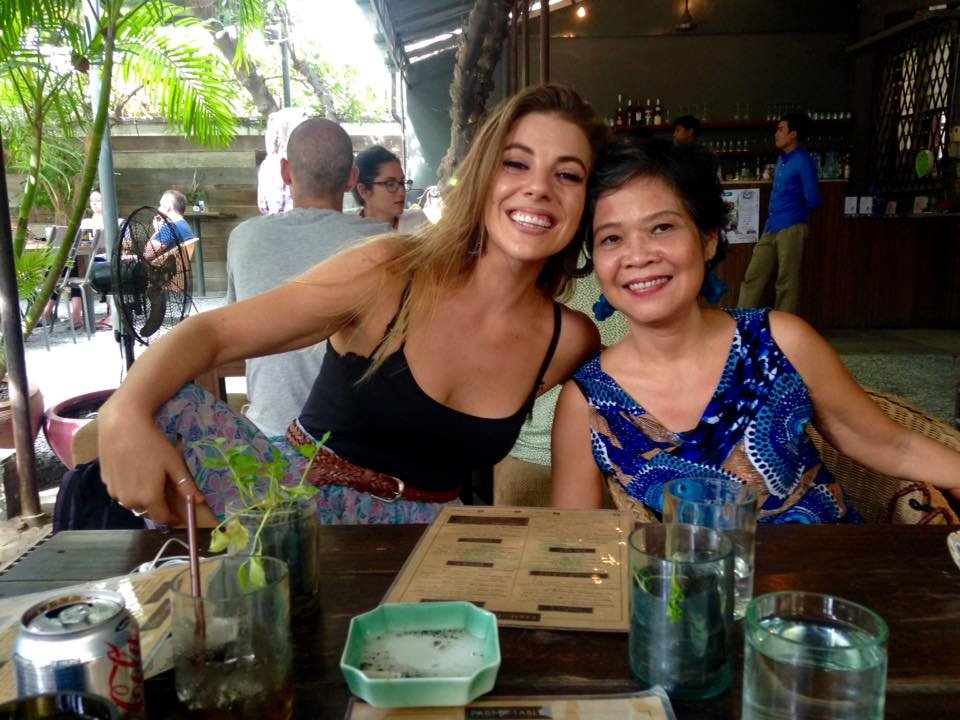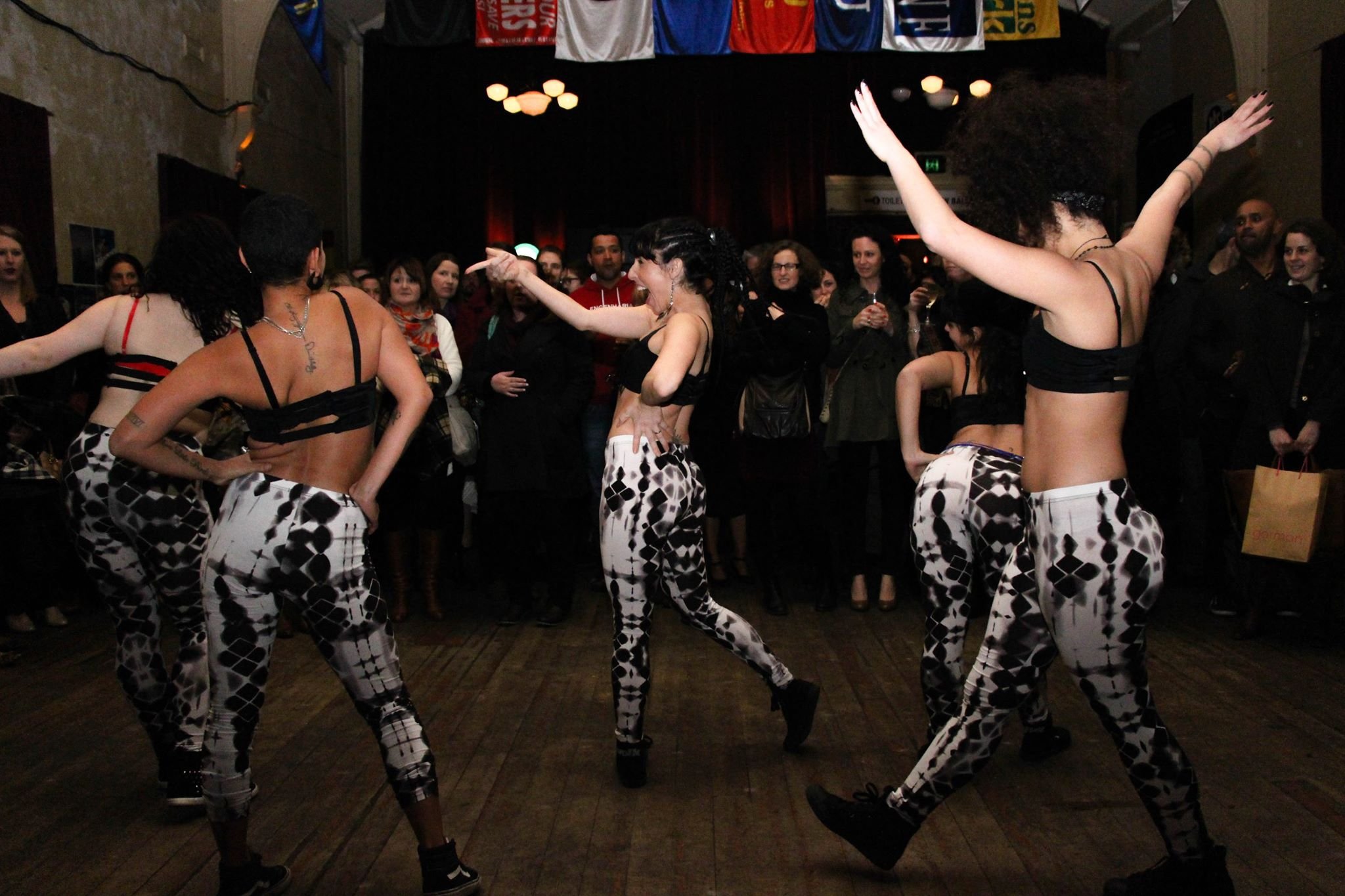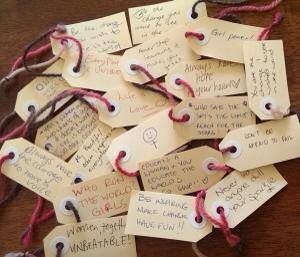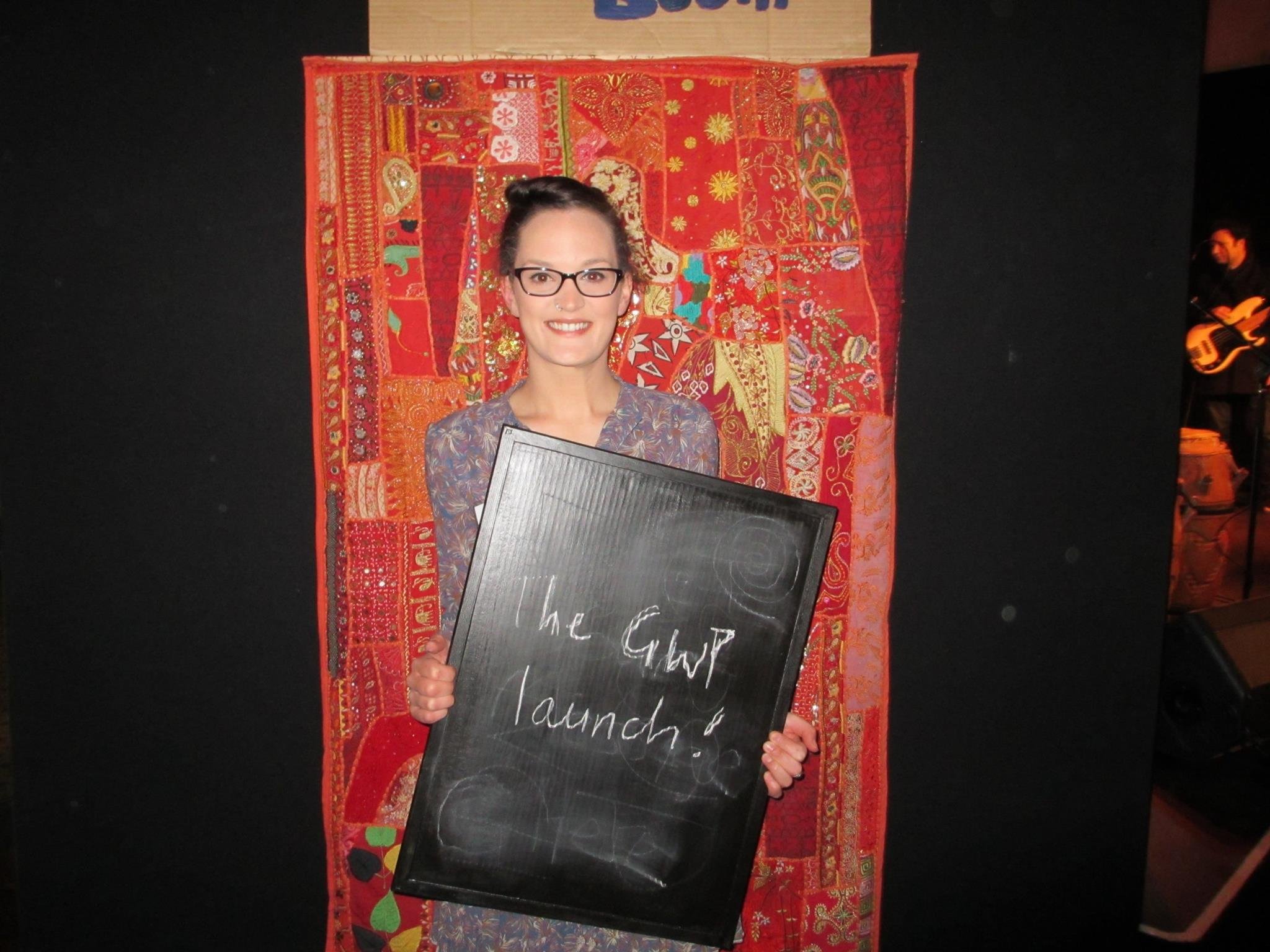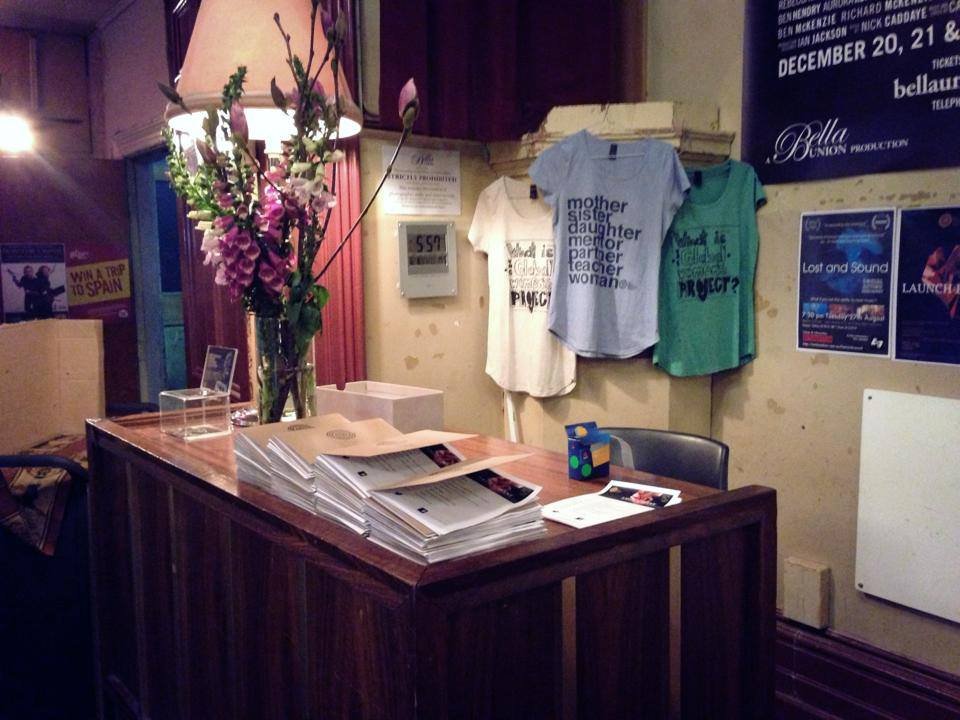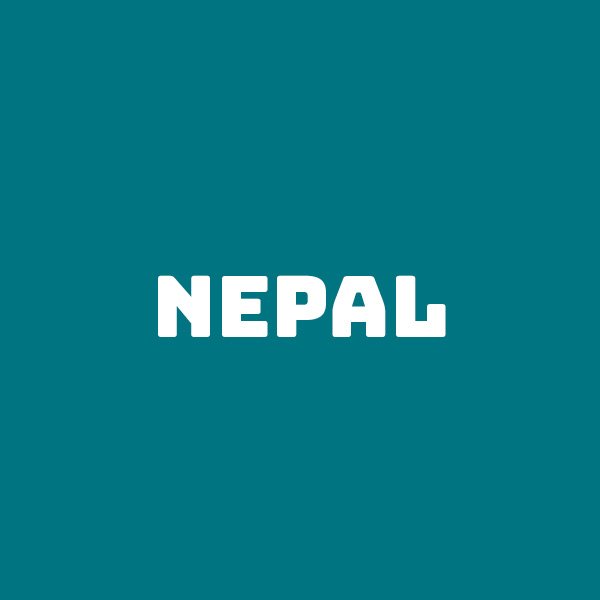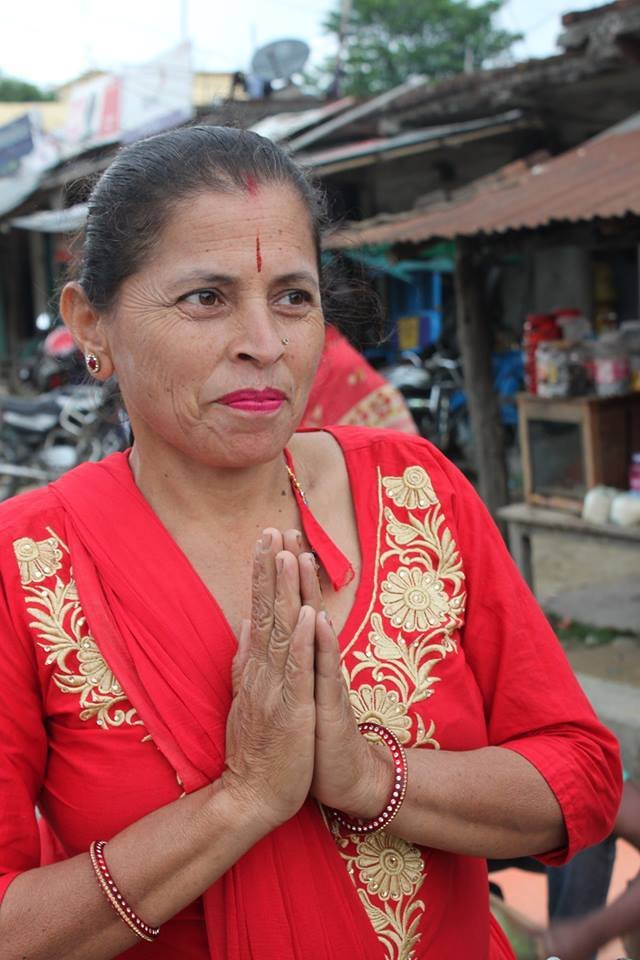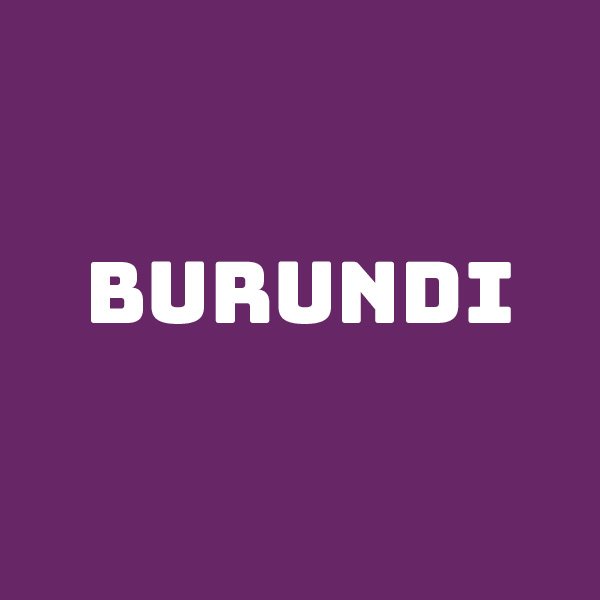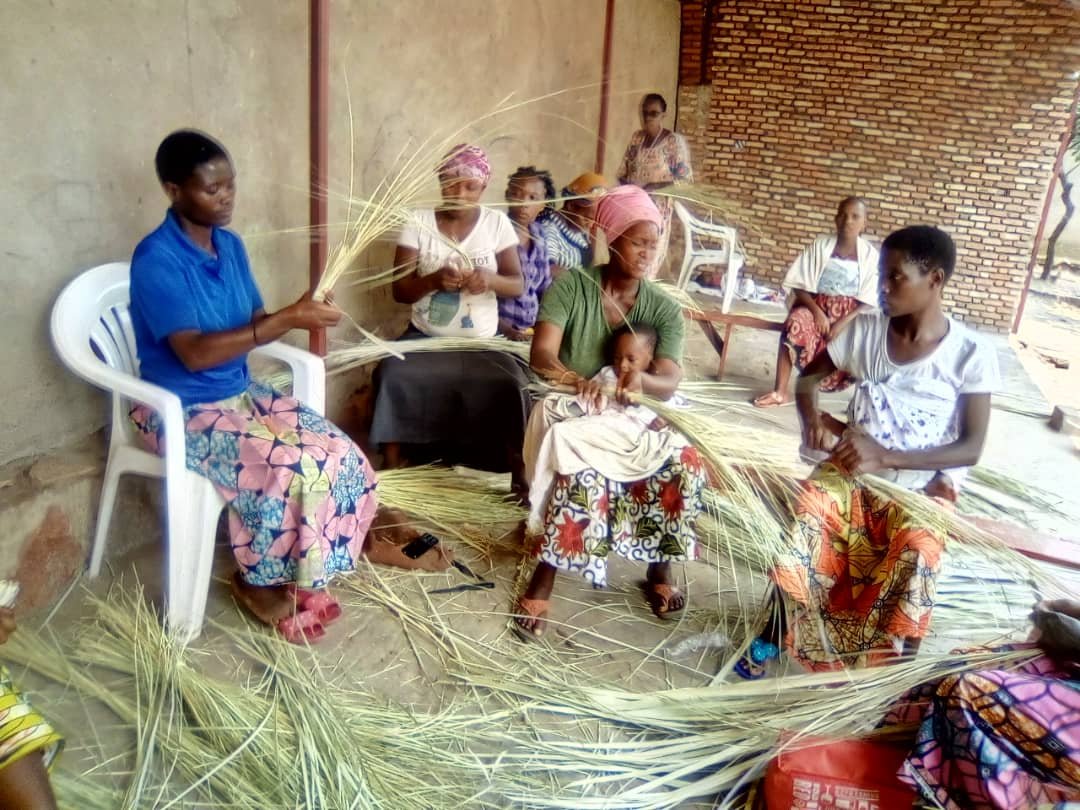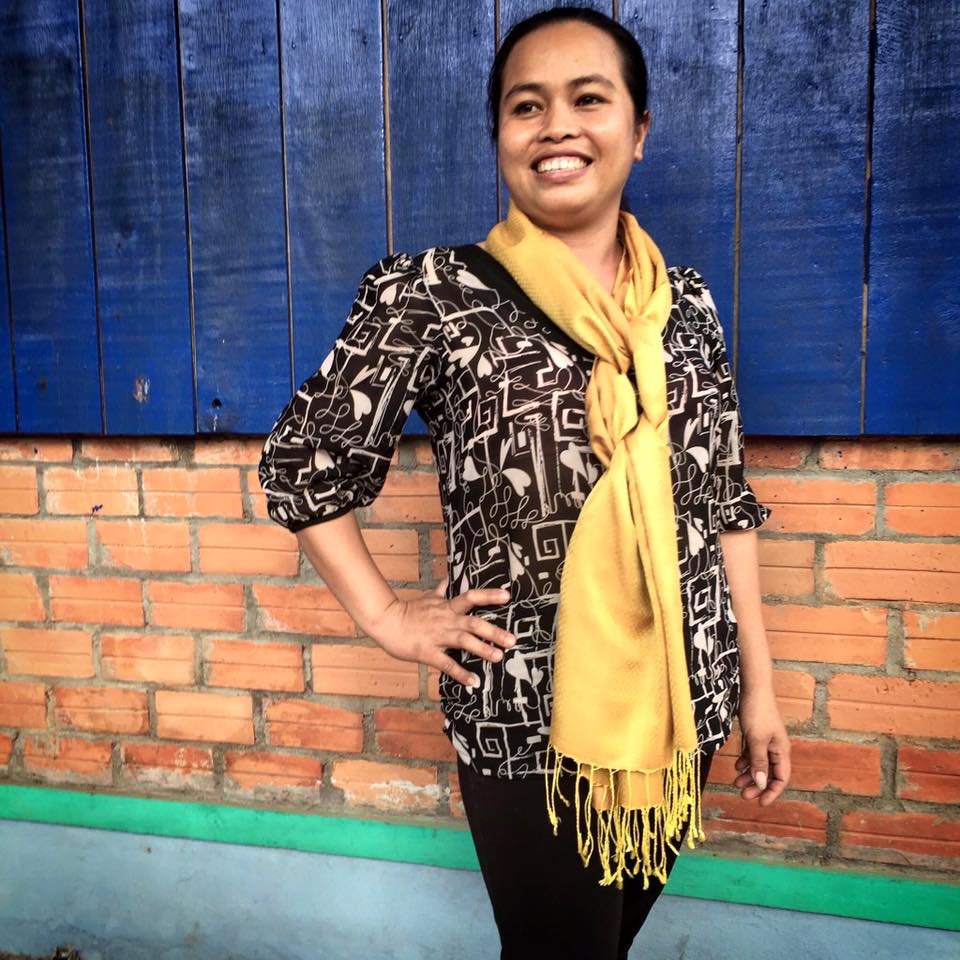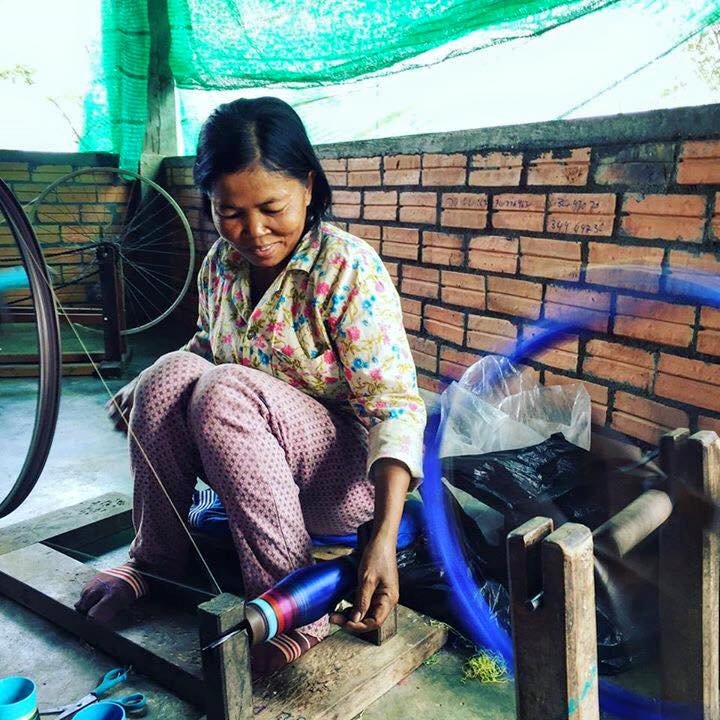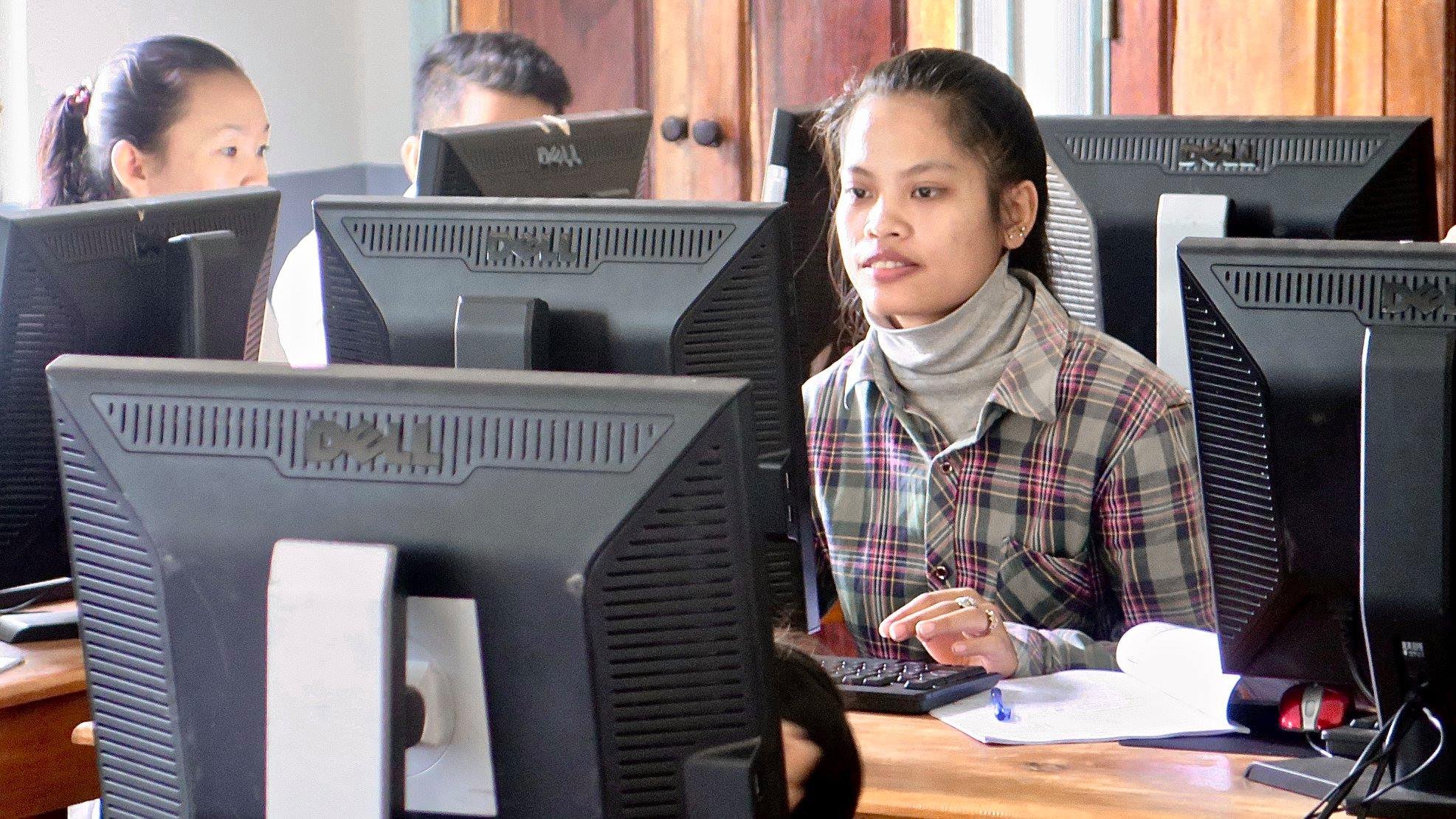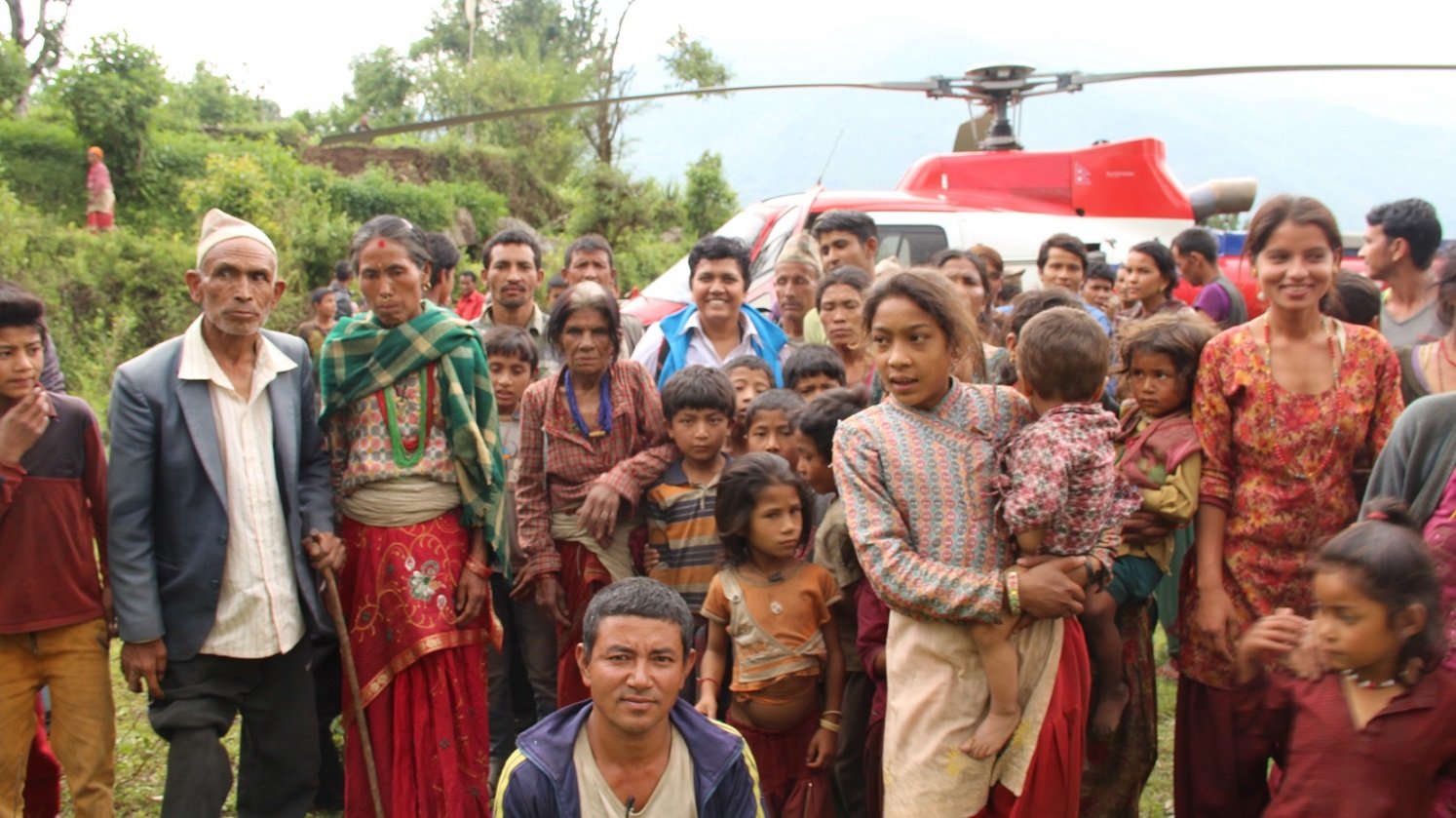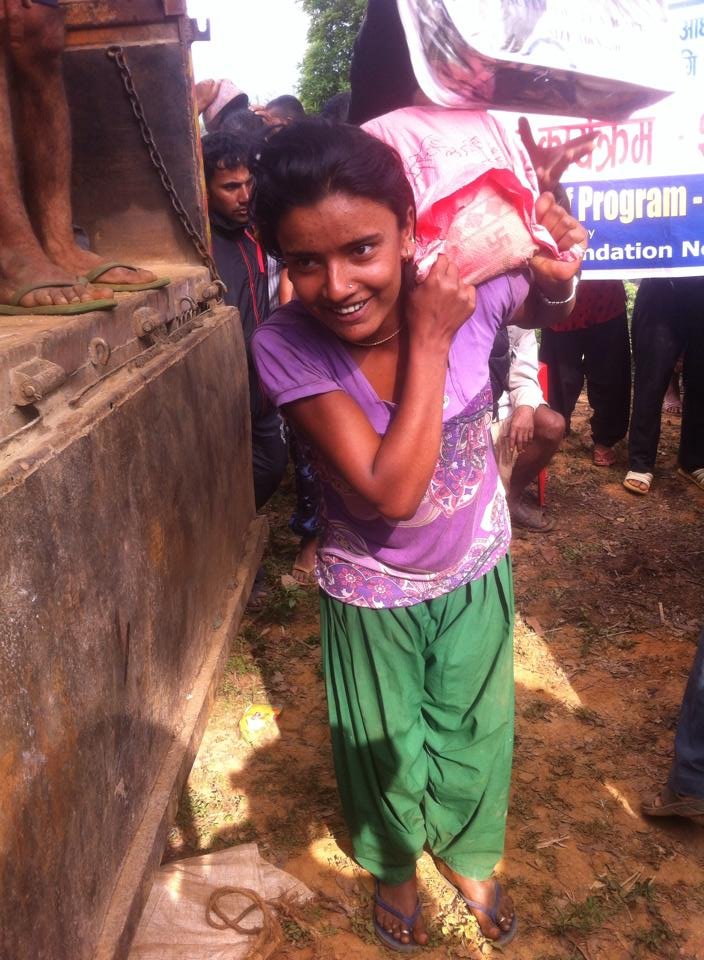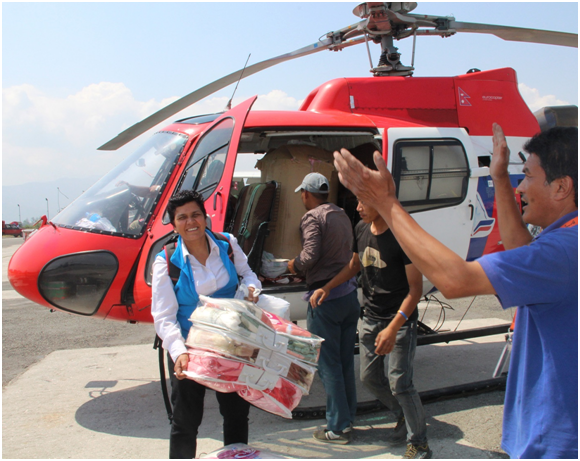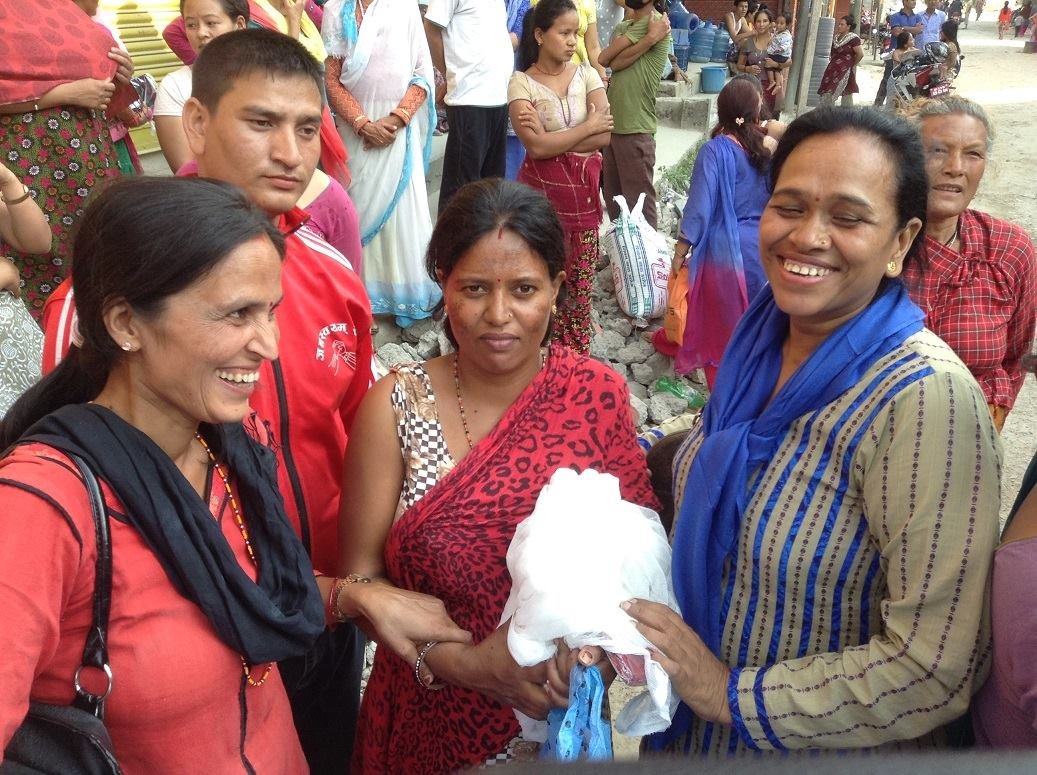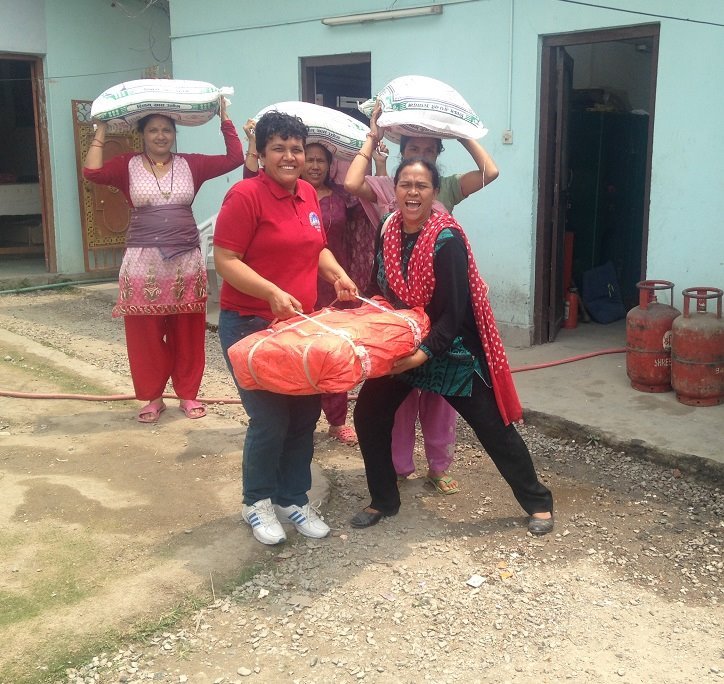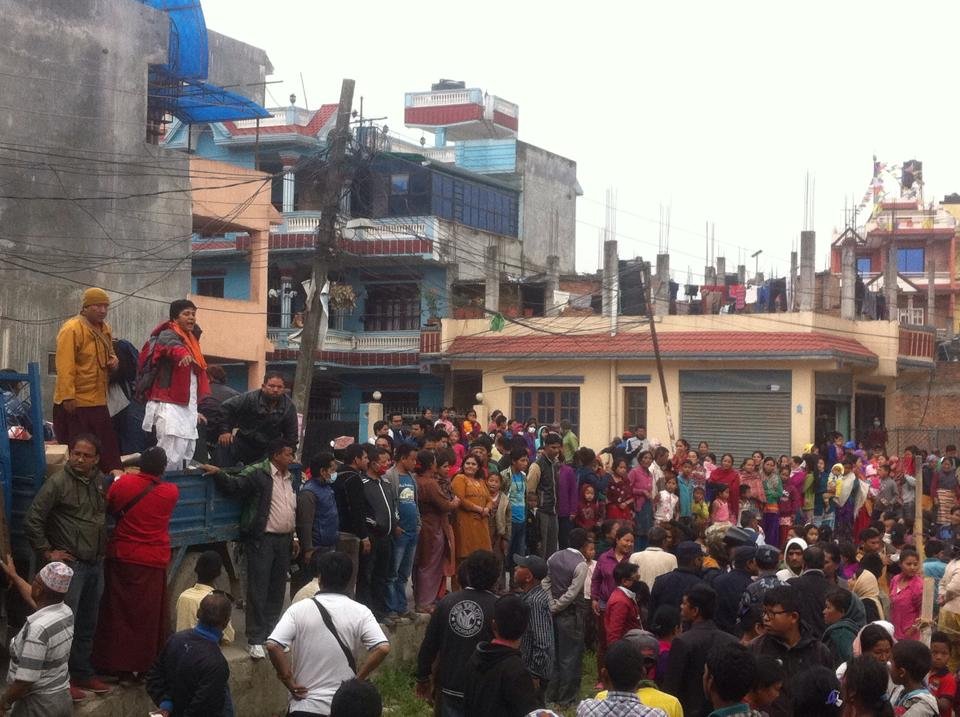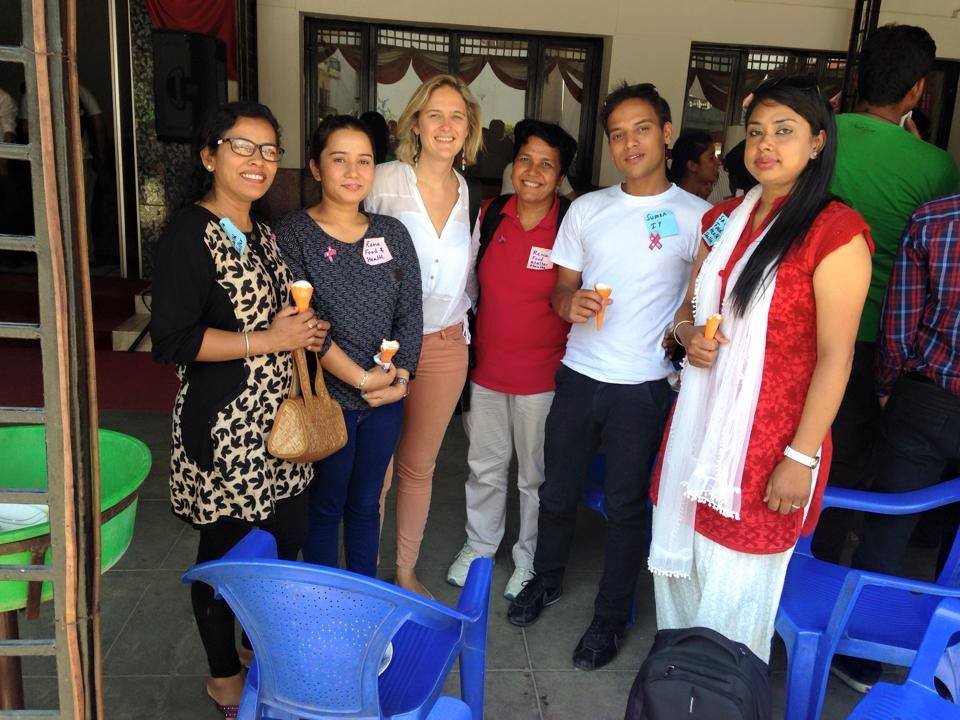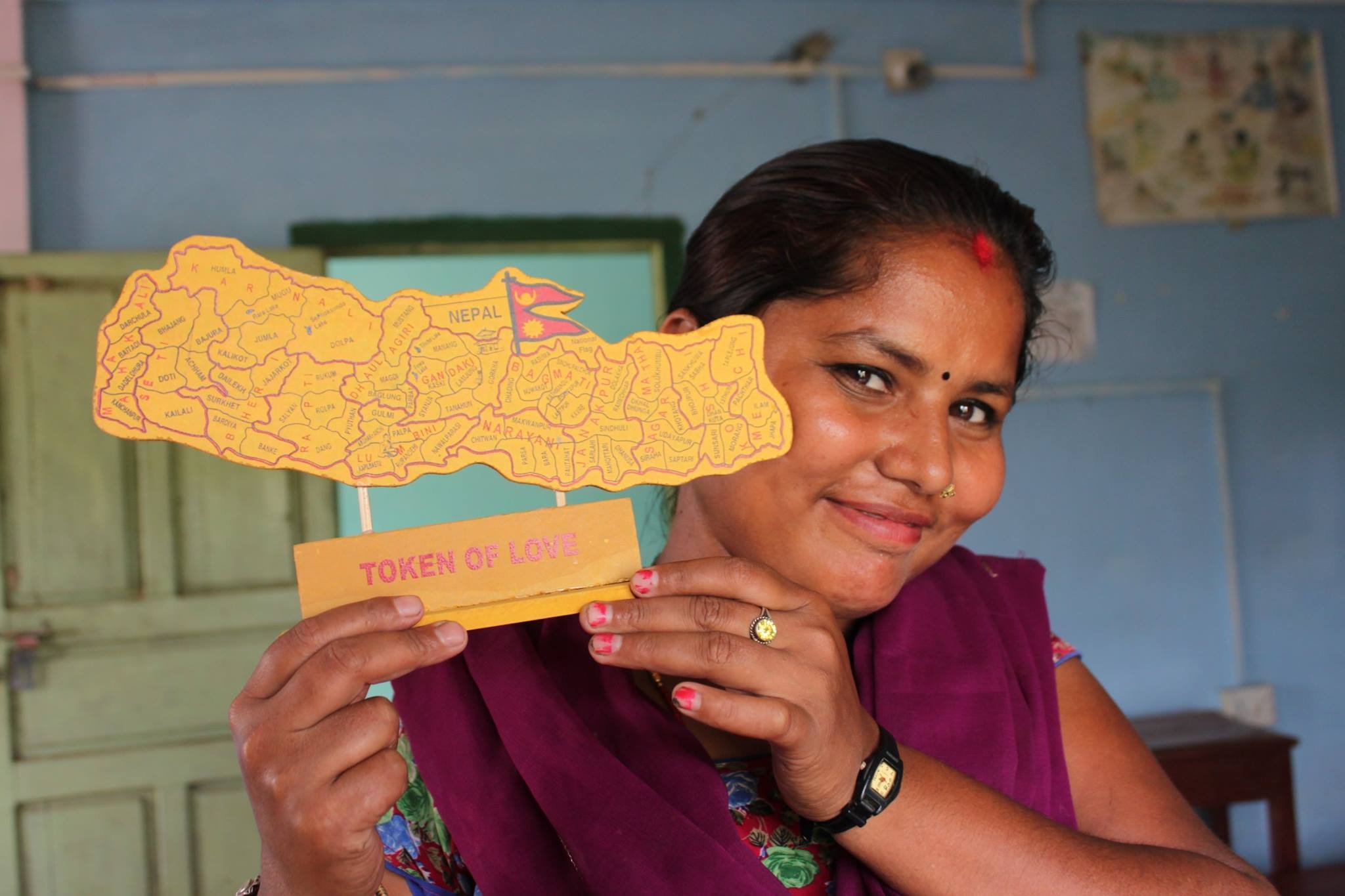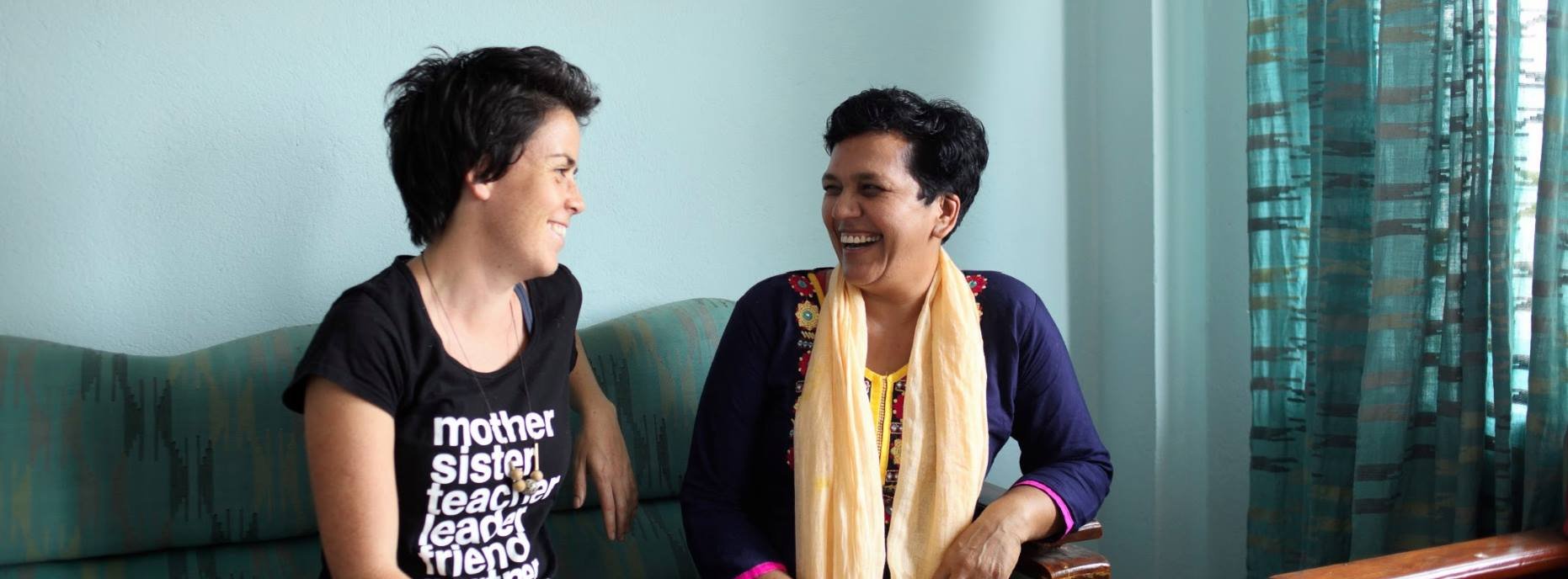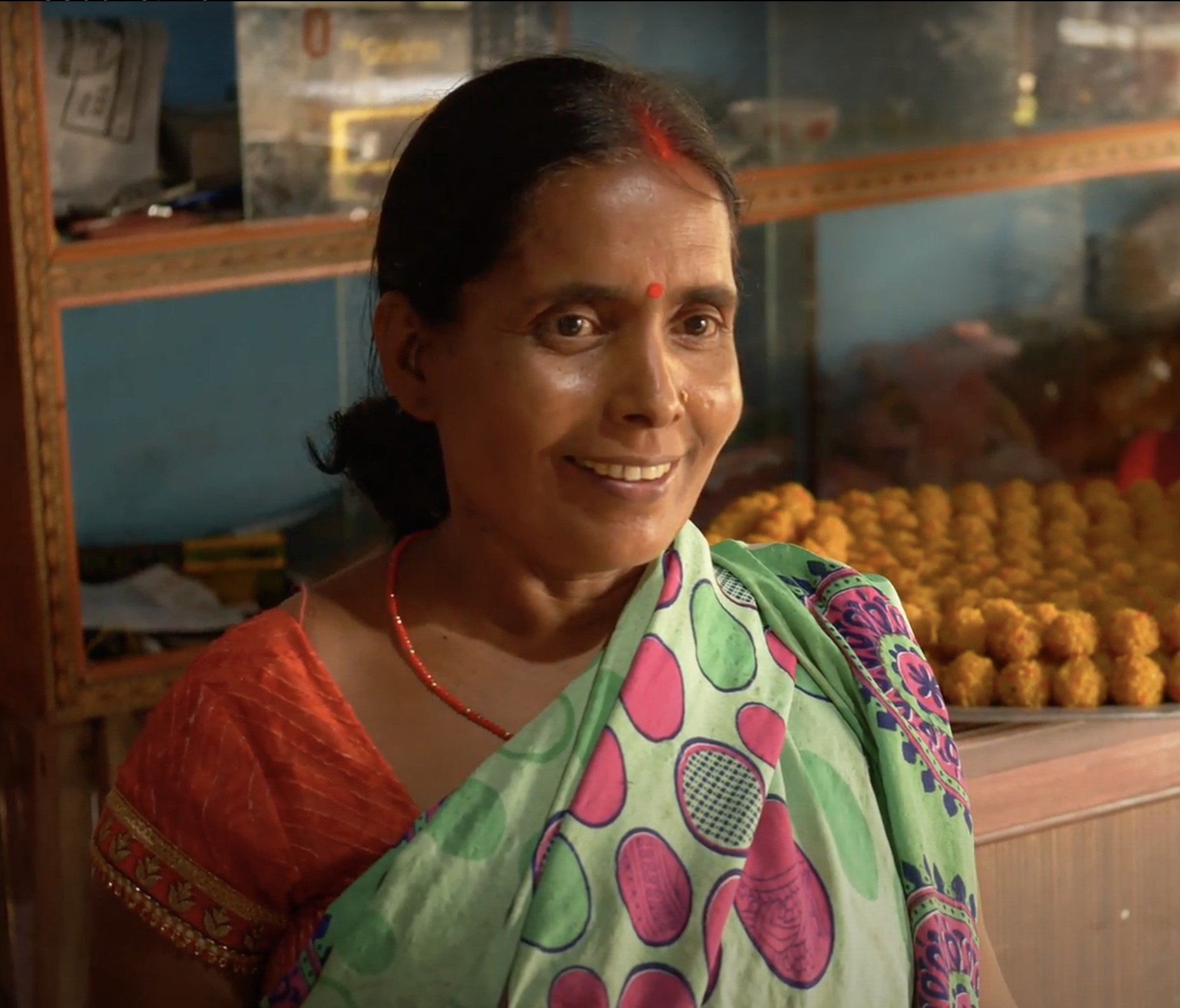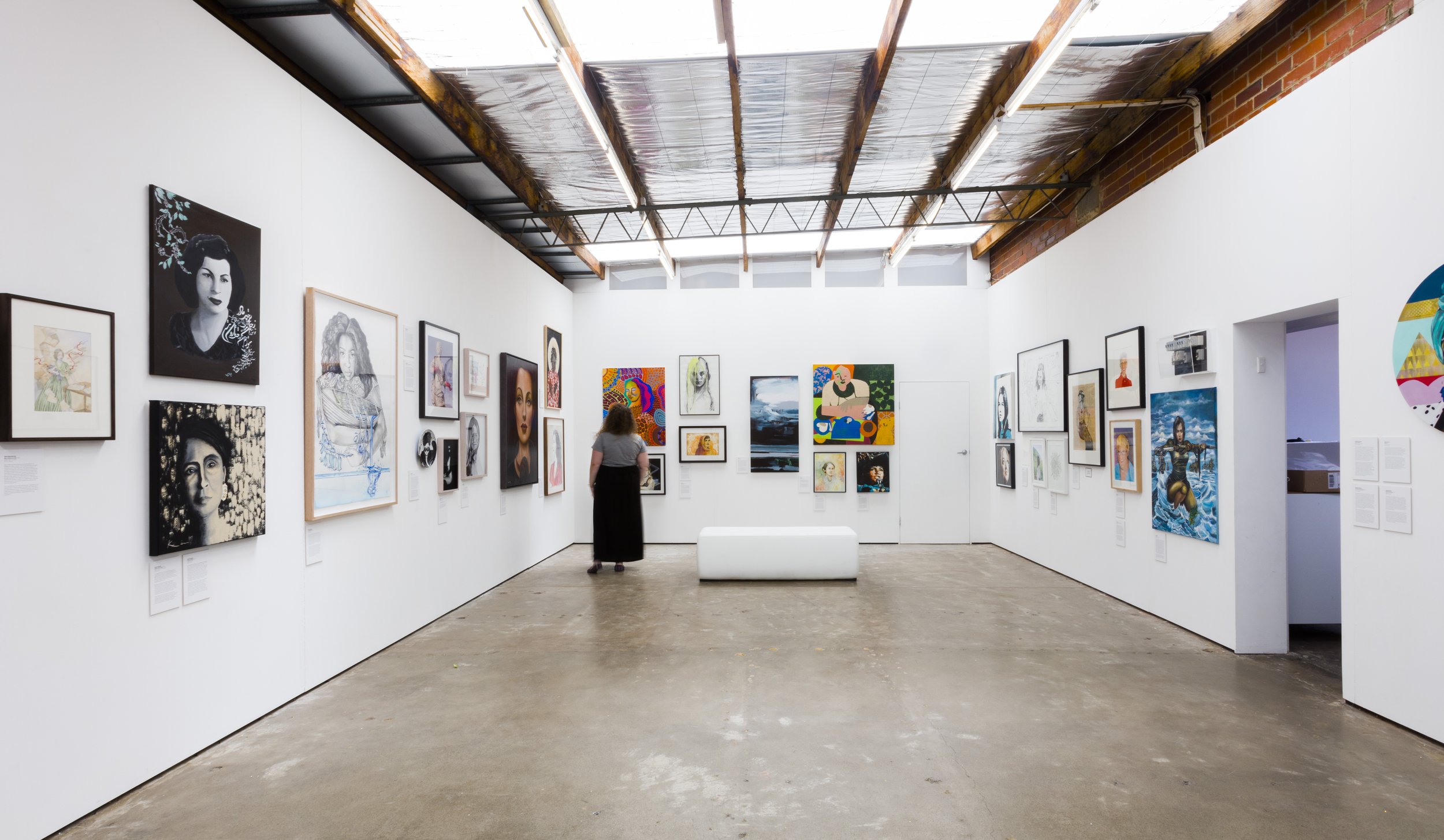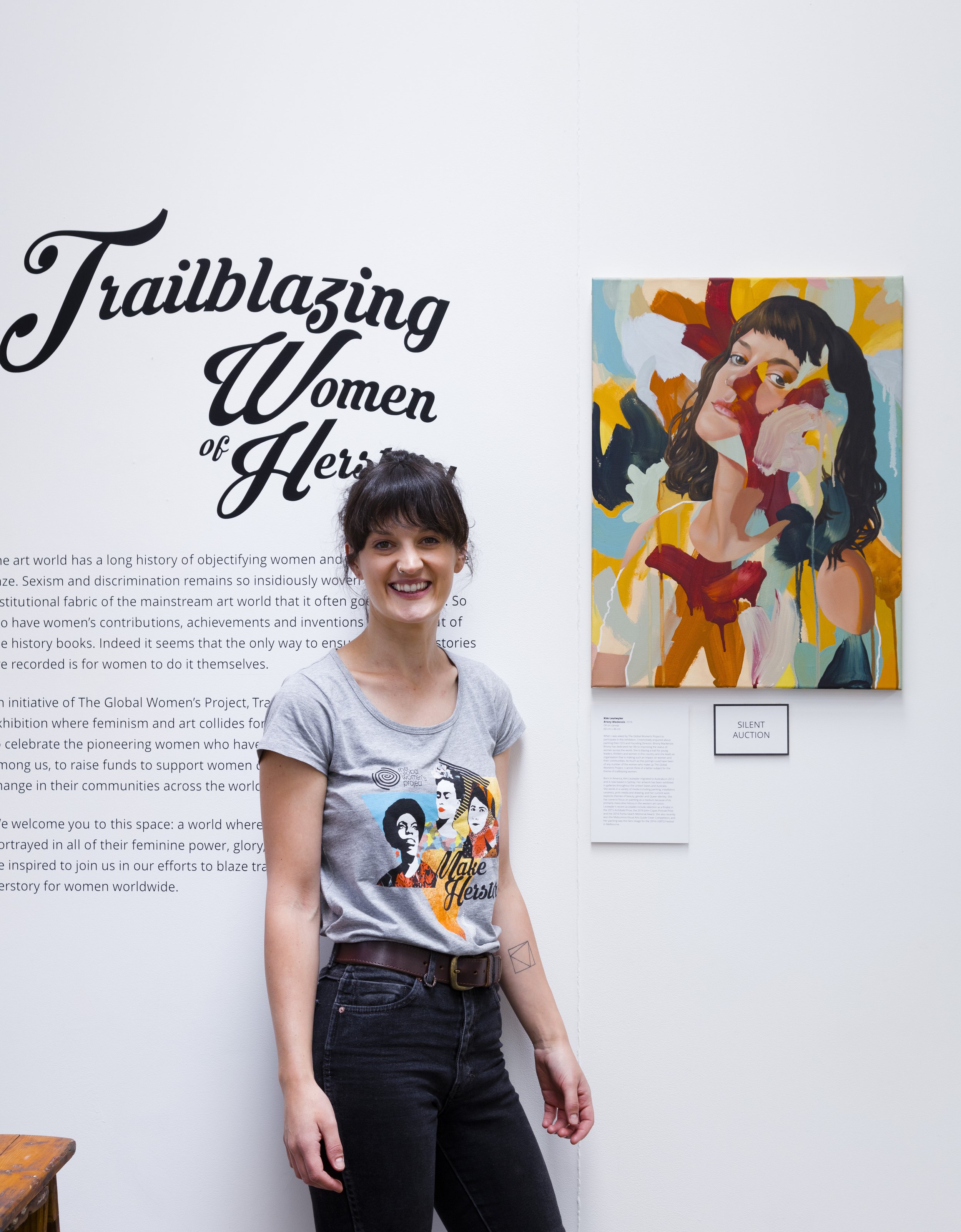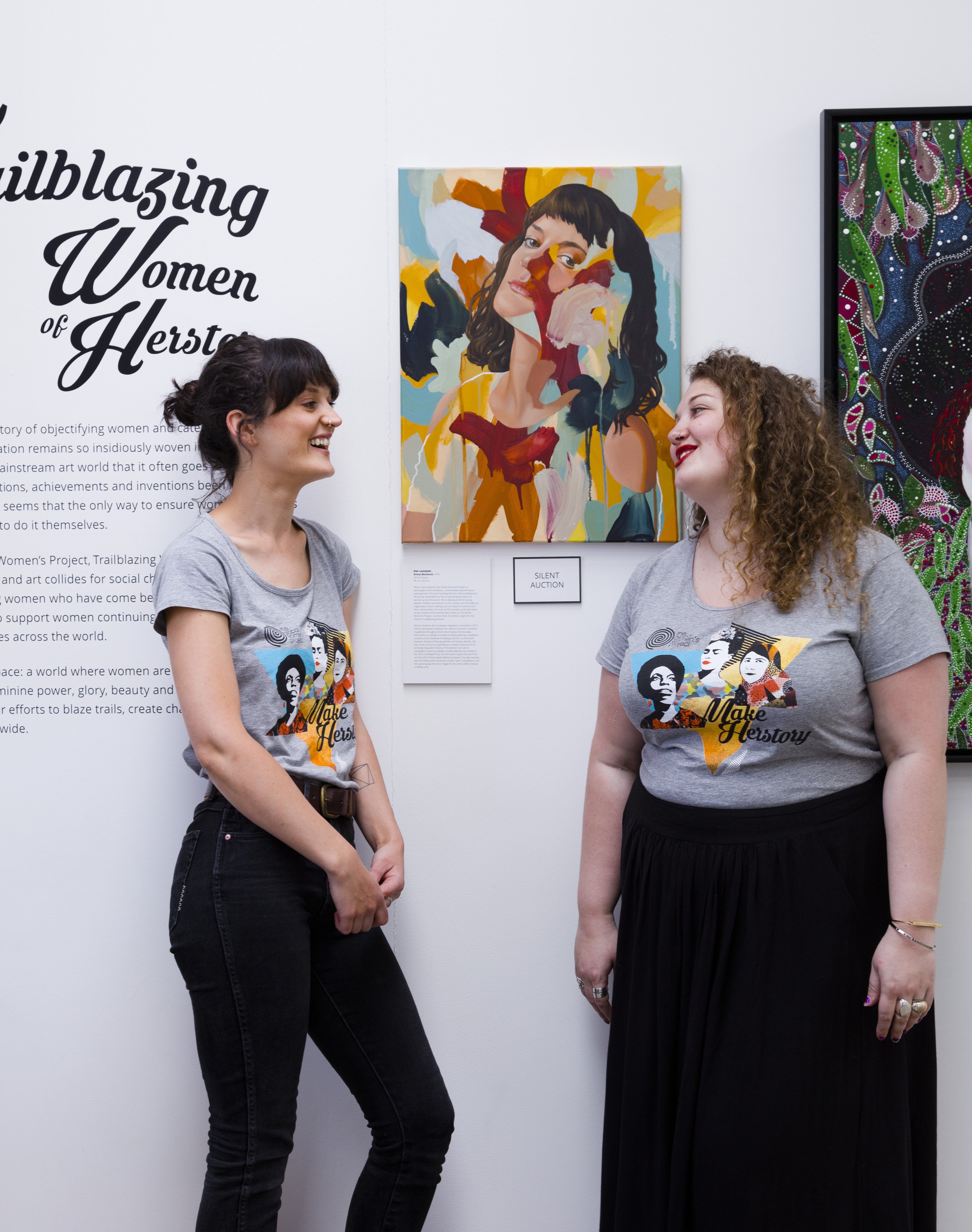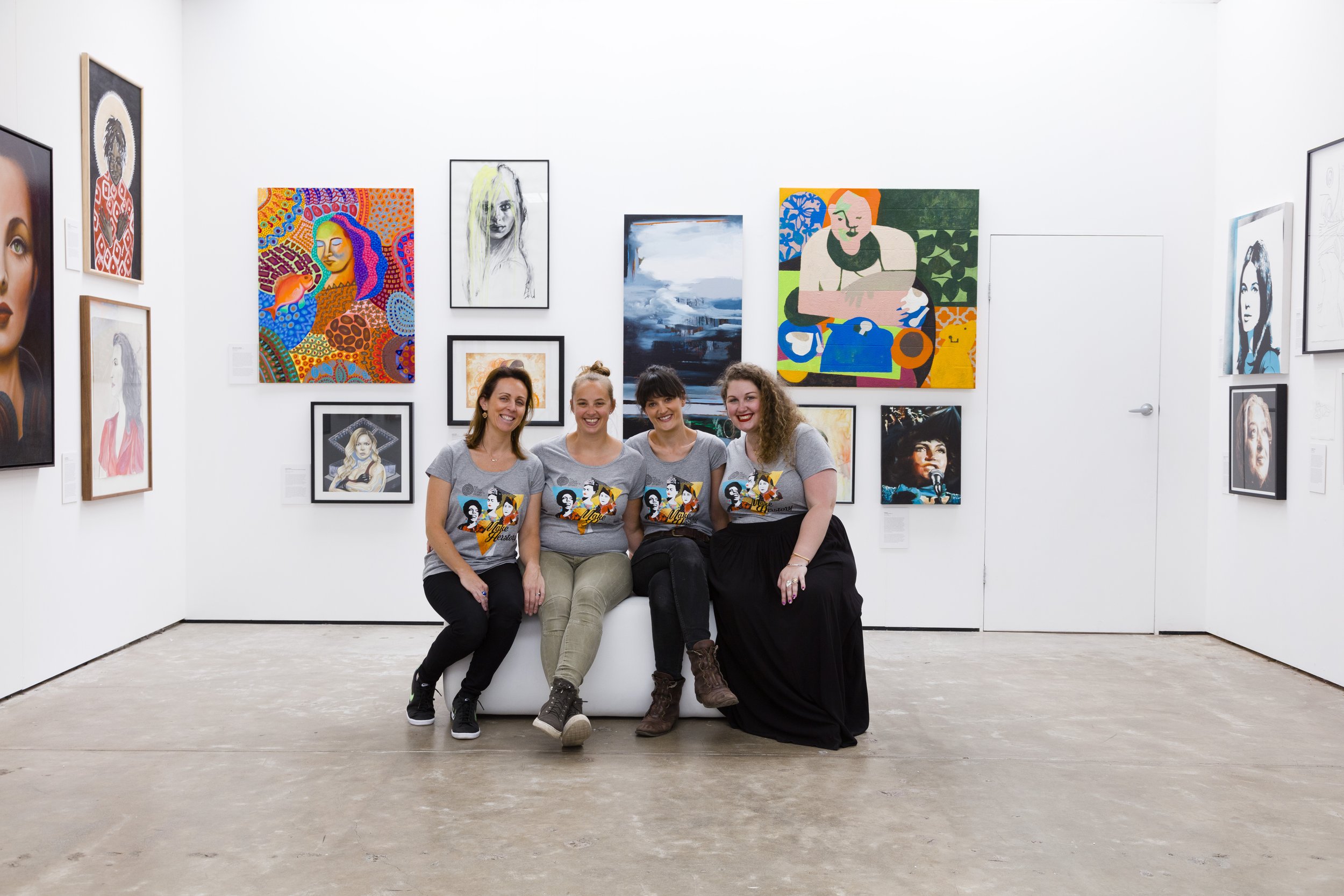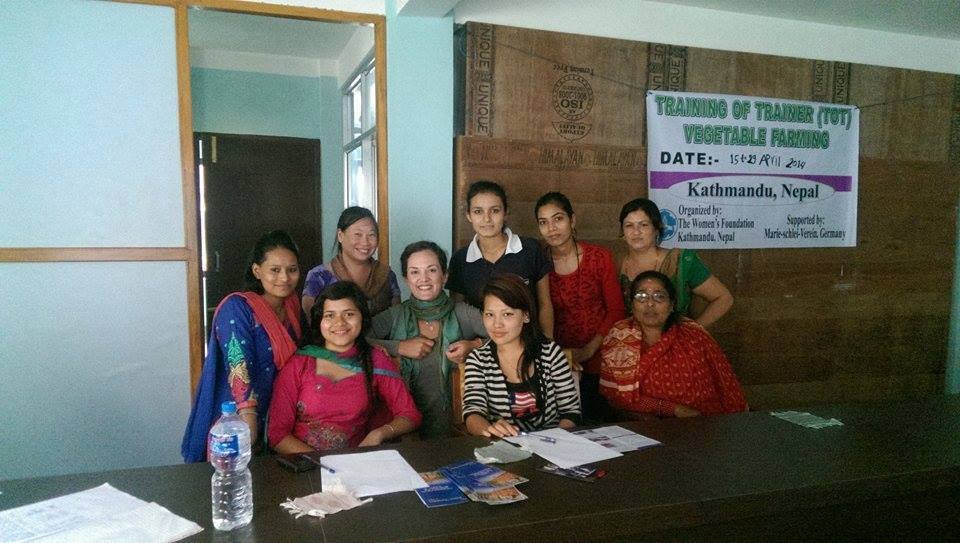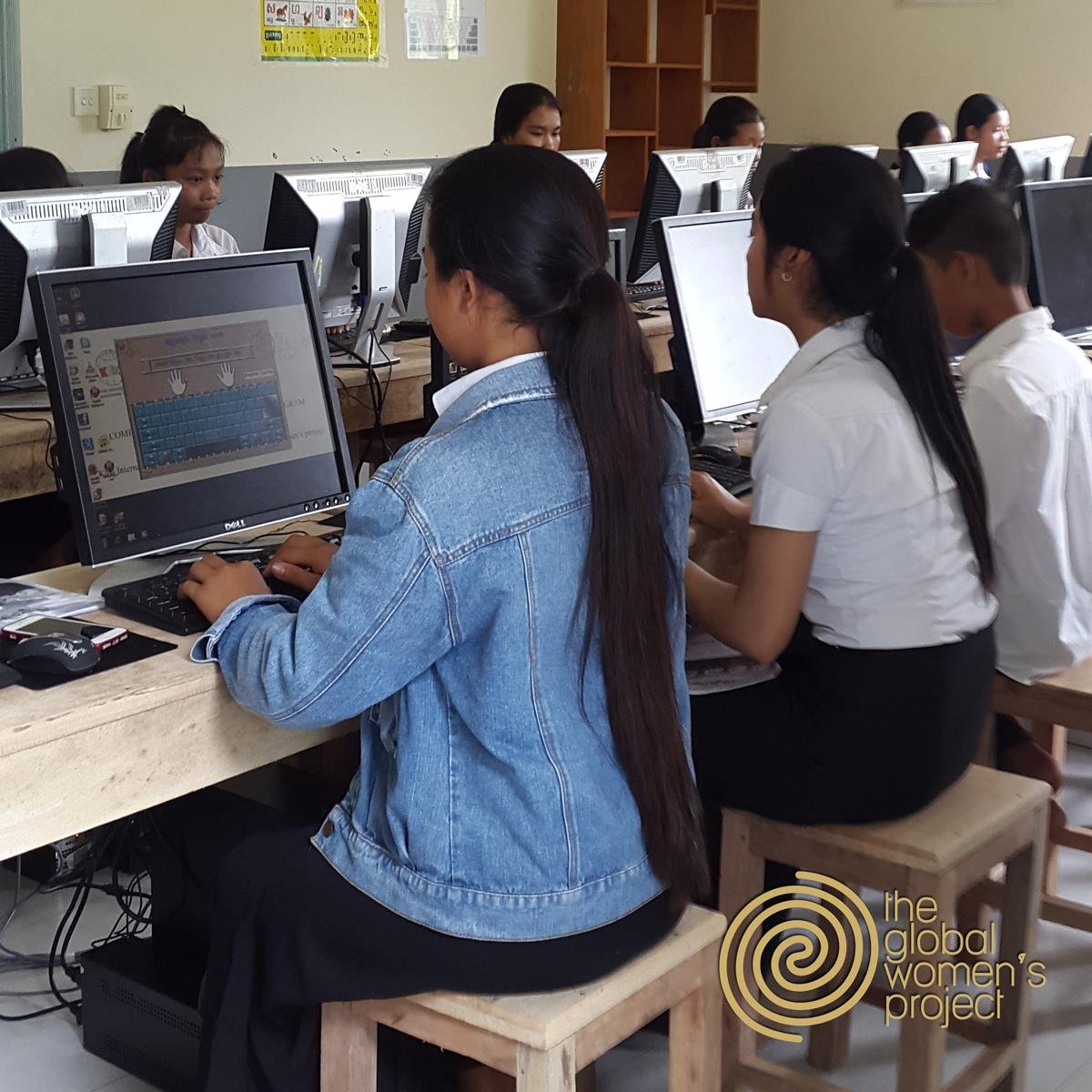10 things we've learned in 10 years of running a small not-for-profit
It turns out that Margaret Mead was right: “a small group of thoughtful, committed citizens can change the world; indeed, it’s the only thing that ever has.”
And while we might not have been able to change the entire world (yet), this small but mighty for-purpose organisation has certainly transformed the lives of thousands of women and their families in several corners of the world – and that is no small thing.
On this, our 10th birthday, we look back on the lessons learned after 10 impactful and inspiring years of The Global Women’s Project – from the grind of fundraising to maintaining meaningful grassroots partnerships and everything in between.
But first, how it started
The idea for The Global Women’s Project seeded in late 2011, while our Founder Kate Williams was travelling throughout Asia. With a background in economic development, she spent several months there, working with two grassroots organisations: The Women’s Foundation of Nepal (WFN) and Stung Treng Women’s Development Center (SWDC) in Cambodia, co-designing and piloting market-driven vocational training programs for women.
Both of these incredible organisations were led by local powerhouses in Renu Sharma (Nepal) and Chantha Nguon (Cambodia), and they had a long track record of delivering transformative education and livelihood programs to women in their local communities. But they had also been facing uncertain futures due to volatile funding and an ever-increasing need for their programs and services.
Seeing firsthand the tangible benefits they were delivering for women and their families, she wanted to find a way to provide them both with ongoing financial and technical assistance to continue their work and scale their impact. And it was that drive that led her to establish The Global Women’s Project in 2012.
Alongside Briony Mackenzie, Lauren Ryan, and Carmen Hawker, and with technical support from Michelle Halse (Strategic Advisor), Shahiman Said (Graphic Design & Brand) and others, the organisation was founded initially as a project of International Needs Australia, soon becoming an Incorporated Associated in our own right by July 2013.
With a vision for a world in which every woman has choice, independence and power to create change, The Global Women’s Project officially launched to a sold-out crowd of committed supporters and seed funders on Friday 16th of August, 2013. The rest, they say – is herstory.
How it’s going
Today marks 10 years since that fun-filled and sold-out launch event at Trades Hall in Melbourne (Naarm). So, whether you’ve been there since the beginning, or whether you’re brand new to the world of The Global Women’s Project, we thought this was as good a time as any to share a little of that herstory. Because although numbers rarely tell the full story, we know that this past decade represents:
10 years of lives impacted, including our own.
10 years of events, awareness-raising and fundraising campaigns.
10 years of partnership and technical support.
10 years of generosity from volunteers, donors and supporters.
10 years of stereotype-smashing and fighting for gender equality.
10 years of women creating change in their communities.
And many, many lessons learned. Here are 10 of the top ones. Enjoy!
Good in-country partners are the secret to success
In many ways, it’s hard to even think back to 2013 when all of this started. The world looked so different, and it was different. We were different, and we are different. The global push for gender equality felt different, and it is different. But one thing has stayed the same: the dedication and commitment of our pheno(wo)menal global partners, who are making change for women in their communities every single day.
For a decade now, we have been offering funding and technical support to three incredible grassroots organisations – The Women’s Foundation of Nepal and Stung Treng Women’s Development Center (since 2013), and Reavi Baho in Burundi (from 2020).
Each of these organisations supports women in underserved communities, with a focus on programs that build women’s economic independence. And there’s no denying that any success and longevity we might have had, we owe to our strong partnerships with them.
“Strong partnerships require consistent and open lines of communication. A shared commitment to transparency. A willingness to collaborate and learn from each other. And most importantly, trusting in their expertise and backing their vision for a thriving community. And these foundations were set up from day one.”
It is not overstating it to say that we only exist because of, and for, them. In fact, it is still somehow understating their impact. And we thank them, deeply and wholeheartedly, for the opportunity to share, support and learn from their leadership every single day.
2. Bigger isn’t always better – small can be mighty
One thing’s for sure: Australia has a pretty wild fascination for ‘big’ things. There’s The Big Banana, The Big Pineapple, The Big Prawn, even The Big Koala. And certainly in the capitalist, colonial and patriarchal world we (unfortunately still) live in, organisations often crumble under the pressure to be as big as they can be, prioritising exponential growth at all costs.
However, we believe that it’s nothing but a fallacy that persists in both the corporate and not-for-profit world that bigger is better. Bigger can just mean bigger, not necessarily better. In fact, small can be mighty and give you the ability and agility to adapt quickly, without the layers of red tape or hierarchy that many larger organisations have. And more than once, our modest size proved to be our superpower.
During the devastating earthquakes in Nepal in 2015, we were able to respond quickly to identify needs and enact emergency plans, working fast alongside our grassroots partner, The Women’s Foundation of Nepal. In those initial few days after the earthquakes, we were able to mount a fundraising campaign that raised almost a quarter of a million dollars and provided over 65,000 Nepalis with relief supplies. This was all while larger organisations were still getting moving. We were also able to organise helicopters to take supplies to remote regions that hadn't received aid, with a focus on women, and provide safe shelter to women and their families whose homes had been destroyed.
Of course, this is not to take away from the vital work that large-scale humanitarian NGOs do in the weeks, months and years post-disaster, just an example of how small and agile organisations also have a role to play in getting help where it is needed most.
A final point on how bigger isn’t always better – over the past decade, our organisation has grown, and then shrunk, and then grown again, before settling on a lean core of volunteers who run the organisation with minimum fuss and maximum bang for buck. Keeping the overheads low and team coordination to a minimum, our small but highly-experienced team ensures we are able to invest more than 95% of your donations (yes, you read that right) directly into our community programs and international partners.
We are so proud of this, but we want to acknowledge that this isn't a model that is accessible or suitable to most other non-profits. It's a model that works for us after a decade of careful planning and strategic partnerships, made possible thanks to our incredible donors and the grassroots partners we know and trust deeply.
3. Planning pays off, but don’t plan for too long
In addition to committing to a model that works for us, following a process that has us doing more of the things we know will work has been another secret to longevity. A great example is our flagship Women’s Hub project through the Women’s Foundation of Nepal. After 5+ years, these Hubs have gone from strength to strength, even through a pandemic, and one reason is: we planned for success from the start.
To begin with, we immersed ourselves in community, ideated and tested new program models with our grassroots partner, and built out a portfolio of future programs, each with their own contingencies.
Together, we settled on the Women’s Hubs – a place where women can come and take part in local savings and loans circles, upskill through a variety of vocational and business workshops and short courses, and increase their capacity to participate in local governance through leadership and political participation training.
The project is well-structured, has well defined impact outcomes, and it meets a community need – this is a program blueprint that works, and it has a knack of generating its own forward momentum.
Of course, there is such a thing as too much planning, and at some point – you have to press ‘play,’ test your assumptions, evaluate the efficacy of your programs, and then iterate on what doesn’t work. You’ll likely know when that moment is, but until that time comes, robust planning really does pay off.
4. Team work actually does make the dream work
No (wo)man is an island, and in order for our organisation to create the impact it has over the past decade, it’s taken the hard work and generosity of a great many people.
Brought together by a shared commitment to gender equality, over the years, we have welcomed the heartfelt contributions of dozens of volunteers, Board members and business supporters — all of whom have given what they can to help the organisation survive and thrive.
From volunteers at our events, to technical specialists supporting our partners, and from artists who created masterpieces for us to auction, to businesses who’ve generously donated goods or lent their brand to build awareness for our programs — getting to this milestone is no accident. And we cannot thank you enough.
5. Fundraising is hard, but it pays off in more than just dollars
When it comes to raising funds for our grassroots partners, we’ve left no stone unturned (or dollar untapped) over these past 10 years.
There’s been film screenings. Art battles. Panel discussions. Poetry nights. Yogathons. Faux feasts with virtual menus and ‘Equalitini’ mocktails. Murals and guerilla spray-painting. DIY fundraisers. Dahl for Dollars. Merchandise. Corporate giving platforms. Presentations at funding networks, Rotary Clubs, workplaces. Radio interviews, opinion pieces. And perhaps the jewel in our fundraising crown: our Trailblazing Women of Herstory Exhibition where we brought together 40 artists and hundreds of people across five events throughout the 16 Days of Activism Against Gender-Based Violence (November 25 - December 10) to raise funds and raise hell for gender equality.
We’ve done campaigns for International Women’s Day, Mother’s Day, Tax Time, International Day of the Girl, #GetWomenOnBoard, International Yoga Day, International Day for the Elimination of Violence Against Women, Human Rights Day — basically, you name it, we’ve tried it.
And what we’ve learned is that: they’re all challenging, in their different ways. Events, especially, take an immense amount of work. They are resource and labour intensive, and they are not for the faint-hearted. But they’re also so worth it, and not just in terms of the funds you raise.
Events, done well, also helps raise much-needed awareness for your cause. They bring communities of people with shared values together. They galvanise and inspire, and they can also create momentum that helps buoy your team and your work into the future.
In many ways, it’s these events that stand out most when we look back on the past decade. They give us ‘moments’ to savour and reflect on, and memories to last a lifetime. On that note, want to have a go at fundraising for us?
6. The voices of those you serve must be at the centre
Undoubtedly, one thing we’ve learned over the past decade is that everything you do – whether it’s as a charity, a business, a collective, or an organisation of any kind – must be informed by the context you’re working in (social, environmental, economic) and respond to a community need. In other words, those you seek to serve must be at the centre of your work.
In many ways, this is something we already knew, and it’s why we designed the organisation the way we did – being a ‘Right Hand Woman’ of sorts to our grassroots partners. This unique partnership model was designed to ensure we could provide in-depth, cross-cutting support wherever it was needed most. And we’ve been reminded of its efficacy, over and over again.
It’s our experience that, as community caretakers, local women often know best what their communities need, but they struggle to access funding and opportunities to grow their skills. Since 2013, we’ve seen how powerful a model for change it can be when we step in gently, and by invitation, to help them fill the gaps. And because women are also disproportionately impacted by disaster, the climate crisis and poverty, they also know what they need most; their voices must be at the centre.
Our work is, and always will be, driven by the local women we work with. Our job, our only job, is to support those women to realise their aspirations.
7. Rosie the Riveter was right, women really can do anything
We don’t know about the adage ‘you can teach a man to fish’, but we do know that you can teach a woman to do just about anything. While some of the programs that we support might be considered more ‘traditional’ vocations for women (e.g. weaving, textile dyeing, silk spinning), we’ve always had a parallel focus on developing and piloting programs that challenge gender stereotypes of what women can or ‘should’ do.
One example was a six week training pilot program we co-created with The Women’s Foundation of Nepal in 2014 called Light the Spark – training local women in basic electrical house wiring. A total of 13 women participated in the pilot, telling us in our post-program evaluation how greatly their self-perception had changed when they had realised they could do 'a man's job'. We were excited to see such an appetite amongst local women and our partners for innovative programs like this, and that participants felt so powerful for having acquired a new technical skillset atypical of their peers.
Another example is the Computer and English Lab we part-funded in Stung Treng, Cambodia. Designed to provide women and girls with the skills needed to take advantage of a growing tourist economy, and to address the digital literacy gender divide, this program gave 320 women and girls the skills they needed to keep up in an increasingly technology-driven world. While we always want to fund programs with the greatest need, as identified by our partners, we also like to keep a keen eye open for the innovative and the stereotype-smashing.
8. The conversation on gender equality has come a long way in 10 years
While there are a few metrics we could point to in order to illustrate that the conversation on gender equality has come a long way in the past 10 years – one measure for us has been how much less time we spend trying to convince people ‘why women?’
In the early days, we would expend a significant amount of time and energy putting forward evidence-based and airtight arguments not only as to why we focused on women, but why women deserve equal opportunities in the first place. In fact, we remember one particularly smarmy and suited up executive accusing us of ‘reverse sexism’ (not a thing), and telling us that if we were truly pro-equality, we wouldn’t focus on women at all.
Nowadays, it’s almost taken for granted why we focus our efforts on women, and we love to see it. In addition to that, a number of our regular donors and business supporters are men, where they weren’t 10 years ago. And progressing gender equality is front of mind for so many people, foundations and businesses, where it wasn’t as prominent a decade ago.
Don’t get us wrong – there is still a long way to go, and getting even this far is testament to the hard work, sacrifice and dedication of the many generations who’ve gone before us, and who walk among us. But it is exciting to see all of the ways in which people are finally taking heed of what women’s organisations have known all along: gender equality benefits everyone.
9. The ‘multiplier effect’ is real
We’ve spoken about how the conversation on gender equality has come a long way in the past decade, and one reason for that is something called the ‘multiplier effect’.
Essentially, when women earn their own income, they consistently invest up to 90% into their families (for men it is around 30-40%). We know that when women have decision-making power over where household income is spent, more money is spent on schooling and food.
We also know that when a woman is educated she has fewer children. This means less financial pressure so families can devote more resources to child nutrition, health, and education. We know that educated mothers pass on their education to their children, and are twice as likely to send their girls to school. And for each extra year a mother is educated, the chance of her baby dying is reduced by 9.5%.
The effects reach across generations and transform communities. But these stats are more than just numbers to us.
Each woman we support represents someone with hopes and dreams, ambitions and skills ready to be nurtured. They represent families whose destinies are rerouted, and communities whose narrative is forever changed.
From Rama in Nepal to Sarun in Cambodia and Marie in Burundi, women are leading lives with more independence, choice and power than before. And we are incredibly proud to back them in any way we can.
“Investing in women and girls has far-reaching effects and the ability to positively impact individuals and communities for generations to come.”
10. The work never feels done – you have celebrate the wins along the way
We’ll keep this one short and sweet, but the work of equality, justice and systemic change is a marathon, not a sprint. Progress can feel painfully slow, and it is painfully slow. It’s also likely that we might not achieve what those who’ve come before us set out to do, in our lifetimes. And so we must celebrate, acknowledge and find ways to mark the ‘wins’ and milestones along the way. That’s exactly what stopping for a moment and shouting out our 10th birthday is all about. Taking a moment, taking in all we’ve collectively achieved, and taking stock of the task still ahead of us.
On that note, we would like to thank each and every one of you who's been involved in getting us to this milestone. Over the past decade, and with your generous support, we have had the privilege to fund and support some seriously world-changing programs that have transformed the lives of thousands of women and their families. And to the women who we do this for, most of whom will never know we exist or ever read this article, thank you. For inspiring us, for showing resilience in the face of adversity, and for showing us what’s possible when women have the independence, choice and power to take their future into their own hands.
Thank you for celebrating The Global Women’s Project’s 10th birthday with us! If you would like to donate or learn more about our work, please visit: theglobalwomensproject.com.au/join-us
